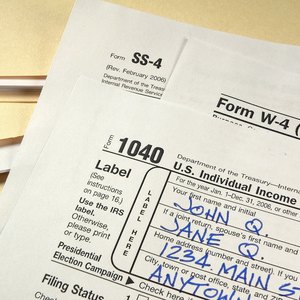
The Federal government has created a pair of tax credit programs that can help make school attendance more affordable. The two programs are the American Opportunity Tax Credit (AOTC) and the Lifetime Learning Credit (LLC). Even if you don’t qualify for either, you still may be able to deduct educational expenses. You can benefit from these tax breaks even if you are financing your education with student loans.
Credits vs. Deductions
Credits reduce your tax bill dollar for dollar, whereas tax deductions reduce your taxable income. You can see the difference when you look at an actual example.
Suppose you made $40,000 and ended up with a pre-credit tax bill $8,000 (tax rate of 20 percent), and you have tuition costs of $2,000 for the year. If you qualify for a $2,000 tax credit, your tax bill drops to $6,000. However, as a deduction, your taxable income would drop to $38,000 (i.e., $40,000 - $2,000), giving you a tax bill of $7,600 (i.e., 0.20 x $38,000). The credit saves you an extra $1,600 relative to deductions.
Definitions in Common
Although they differ in the details, both the AOC and LLC share certain definitions that include:
- Academic Period. This is a school-defined period that starts during the current tax year or in the first three months of the next tax year. You must pay your educations expenses for the academic period in order to qualify for a tax credit.
- Qualified Payer. This can be you, your spouse (if you file a joint return), your dependent or a third party (including friends and relatives).
- Qualified Education Expenses. These must be paid by a qualified payer. Qualified expenses include tuition, fees, activity fees and related expenses required for student enrollment and attendance during at least one academic period in an eligible educational institution.
- Eligible Educational Institution. This is a school that provides post high school education. It can be a college, university, trade school or other educational institution beyond high school. You can verify that an educational institution is eligible by checking the Database of Accredited Post-Secondary Institutions and Programs (DAPIP).
Requirements in Common
Certain requirements must be satisfied to claim an education credit: A qualified payer must pay qualified educational expenses; an eligible student must attend an eligible educational institution; the taxpayer and the IRS must receive a copy of Form 1098-T, Tuition Statement from the educational institution; the taxpayer must file Form 8863, Education Credits. You cannot claim both the AOTC and LLC in the same year for the same student.
The American Opportunity Tax Credit
The AOTC annually provides up to $2,500 per student for the first four years of higher education. The credit is for qualified education expenses for eligible students. The amount of the credit is 100 percent of the first $2,000 of qualified expenses plus 25 percent of the next $2,000 of qualified expenses If your credit reduces your tax bill to $0, you’ll receive 40 percent of the remaining credit (up to $1,000).
The AOTC is subject to limits on modified adjusted gross income (MAGI): MAGIs up to $80,000 ($160,000 for joint filers) can claim full credit; MAGIs above $80,000 but below $90,000 (above $160,000 but below $180,000 for joint filers) can claim partial credit; MAGIs of $90,000+ ($180,000+ for joint filers) receive no credit.
To receive the credit, students must:
- Be enrolled half-time or more for at least one academic period.
- Pursue a recognized educational credential, such as a degree.
- Not claim the AOTC for more than four tax years.
- Not have exceeded four years of higher education.
- Avoid a felonious conviction for drug-related activity.
The Lifetime Learning Credit
The LLC is a broader tax credit because it is not limited to four years of education, covers expenses beyond tuition and fees (such as course-related books, supplies and equipment) and can be used for undergraduate, graduate and professional degree courses. The LLC can help you afford college even if you’ve been out for a while.
Eligible students must:
- Enroll and attend an eligible educational institution.
- Take courses to get a degree, credential, or job skill.
- Enroll for at least one academic period.
The credit is worth up to $2,000 per tax return. As of 2020, your modified adjusted gross income must be below $59,000 (or below $118,000 for married joint filers) to receive the full credit amount.
References
- IRS: Education Credits--AOTC and LLC
- U.S. Dept. of Education: Database of Accredited Post-Secondary Institutions and Programs
- IRS: Qualified Education Expenses
- IRS: About Form 1098-T, Tuition Statement
- IRS: About Form 8863, Education Credits
- IRS: American Opportunity Tax Credit
- IRS: Lifetime Learning Credit
- Internal Revenue Service. "Lifetime Learning Credit." Accessed March 5, 2020.
- Internal Revenue Service. "American Opportunity Tax Credit." Accessed March 5, 2020.
- Internal Revenue Service. "Education Credits: Questions and Answers." Accessed March 5, 2020.
- Internal Revenue Service. "Am I Eligible to Claim an Education Credit?" Accessed March 5, 2020.
- Internal Revenue Service. "Form 1098-T (2020): Tuition Statement," Page 1. Accessed March 6, 2020.
- SEC.gov. "An Introduction to 529 Plans." Accessed March 6, 2020.
Writer Bio
Eric Bank is a senior business, finance and real estate writer, freelancing since 2002. He has written thousands of articles about business, finance, insurance, real estate, investing, annuities, taxes, credit repair, accounting and student loans. Eric writes articles, blogs and SEO-friendly website content for dozens of clients worldwide, including get.com, badcredit.org and valuepenguin.com. Eric holds two Master's Degrees -- in Business Administration and in Finance. His website is ericbank.com.

